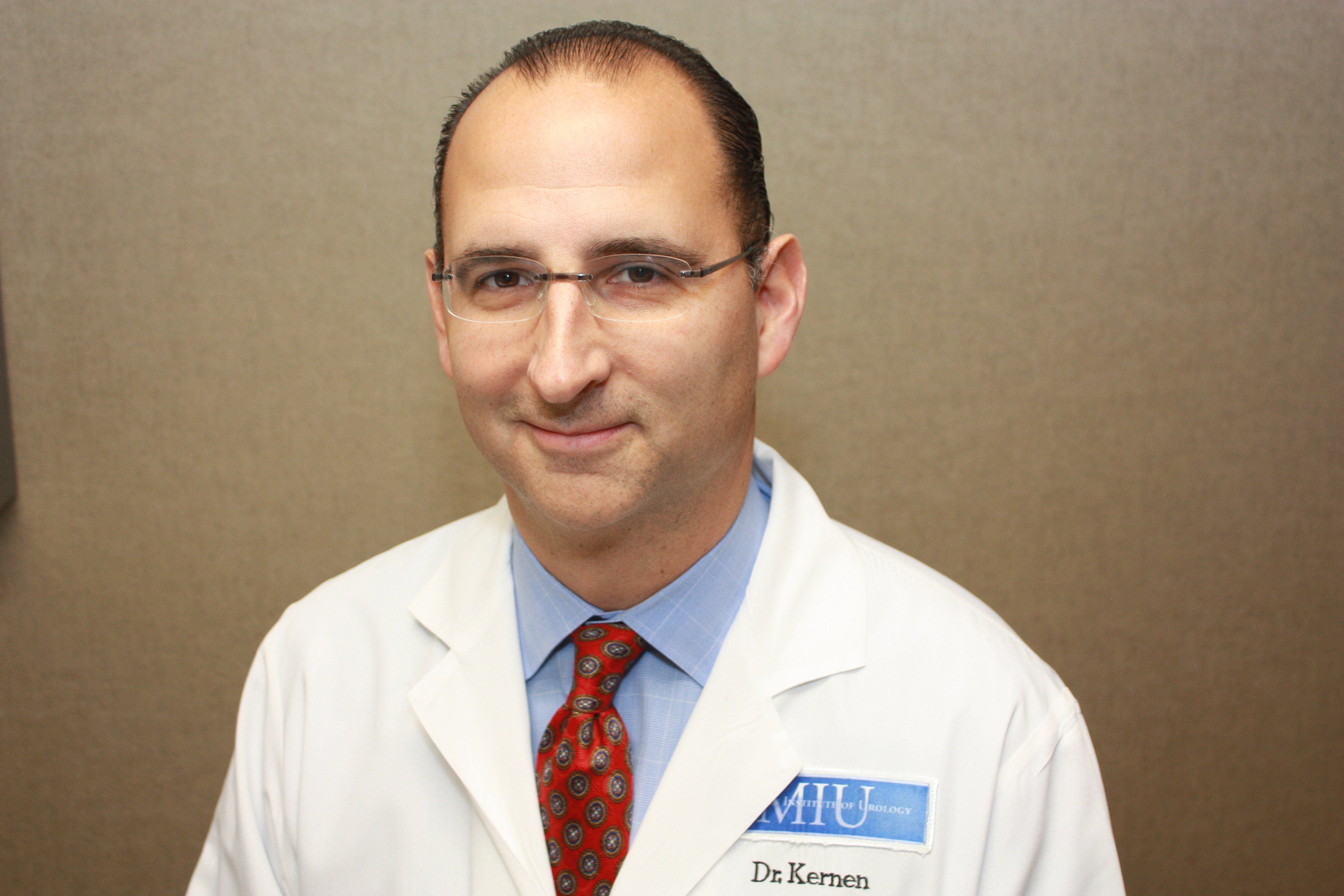Six Fatal Conditions: Treatment Developments Health Execs Should Know
Researchers and scientists continue to develop and test new treatments for these fatal conditions. Here’s a look at some major developments in these areas.
Normal Anatomy

The American Cancer Society Stat Box

Finkelstein

Kernen

Meiri

Atallah

Gomez

Edelman

Rahimi

Tsai

Iverson

Brangman

Traster

Prostate, colorectal, and lung cancer remain among the most common diseases in men while breast cancer, maternal mortality, and Alzheimer’s disease are quite common in women. Researchers and scientists continue to develop and test new treatments for these fatal conditions. Here’s a look at some major developments in these areas.
MEN
PROSTATE CANCER
Safer radiation therapy
Radiation therapy is a common and highly effective treatment option for prostate cancer. However, it can unintentionally injure surrounding healthy tissues resulting in a range of bowel, urinary, and sexual function disorders.
SpaceOAR Hydrogel is an innovative new treatment for men undergoing radiation treatment for prostate cancer that acts as a spacer, providing space between the rectum and prostate. This reduces the chances that the rectum is exposed to harmful radiation, explains Steven E. Finkelstein, MD, director, Advanced Urology Institute/Bay Regional Cancer Center, Panama City, Florida.
Before starting radiation treatment, the physician injects the hydrogel between the prostate and rectum. The material quickly solidifies into a soft gel that expands in the space, creating a barrier, Finkelstein explains. The hydrogel remains in this space until radiation therapy is completed and then the body eliminates it.
SpaceOAR is the first and only prostate cancer spacing device to receive FDA clearance. It received approval in April 2015. Clinical data has highlighted the long-term bowel and sexual quality of life benefits in men receiving SpaceOAR. Results from three and five-year post treatment studies support the use of SpaceOAR during radiotherapy for prostate cancer.
Radiopharmaceutical treatment
Michigan Institute of Urology in Detroit, Michigan, offers a radiopharmaceutical treatment called Xofigo, which can help extend life by more than 30% in men whose prostate cancer no longer responds to medical or surgical treatment, and has spread to the bone with symptoms but not to other parts of the body. “Xofigo gives off a strong energy that is deadly to cancer cells in the bones, but does limited damage to nearby healthy cells,” says Kenneth Kernen, MD, partner, urologist, and director of research. Patients receive one injection every four weeks, six injections total.
As a radiopharmaceutical, when it is injected into the vein it is radioactive. It goes to areas in the bone where prostate cancer has spread and attacks those cells, Kernen says.
COLORECTAL CANCER
Immunotherapy
In the past few years, Eyal Meiri, MD, interim chief of medical oncology, medical oncologist, Cancer Treatment Centers of America in Atlanta, reports more use of immunotherapy in individuals with colorectal cancer. Immunotherapy refers to treatment of cancer using the body's immune system to identify and attack cancer cells. One type of immunotherapy involves using innovative medications called checkpoint inhibitors.
Cancer cells have developed a mechanism to fool the immune system from recognizing them as foreign. Checkpoint inhibitors release immune T-cells to recognize and attack cancer cells, Meiri says.
In 2017, the FDA approved two checkpoint inhibitors, pembrolizumab and nivolumab for eligible patients. More than 80% of patients benefited from the therapy in one trial of patients with MSI-H colorectal cancer, says Meiri.
“These treatments hold promise due to their low toxicity and long-lasting benefits,” Meiri says. The lack of nausea, hair loss, fatigue, and many other side effects of chemotherapy make this treatment option attractive.
TransAnal minimally invasive surgery (TAMIS)
This newer approach to remove rectal tumors and polyps, is a safe, effective, and valid option for select patients with early stage rectal cancers and pre-cancerous growths of the rectum, according to a recently released study. TAMIS, developed in 2009 by Sam Atallah, MD, director, colorectal surgery, Oviedo Medical Center in Oviedo, Florida., and two other surgeons, allows surgeons to perform surgery through a natural orifice without any scars and with minimal or no pain afterward.
TAMIS uses laparoscopic equipment, high-definition cameras, and a specialized insufflation system. The recent study published in the Annals of Surgery monitored 200 cases over a six-year period and found that the procedure helped patients maintain organ preservation.
LUNG CANCER
Immunotherapy
Jorge E. Gomez, MD, director of thoracic oncology, Mount Sinai Hospital, New York, and member of the American Lung Association’s Lung Cancer Expert Medical Advisory Panel, has found success in using immunotherapy.
In patients with inoperable stage 3 lung cancer that has spread to the lymph nodes in the center of the chest, using immunotherapy after chemotherapy and radiation, has delayed recurrence of cancer in many patients by over 10 months, says Gomez.
Immunotherapy has been able to improve what is called the “progression-free survival rate.” This is the length of time between treatments where the cancer doesn’t grow, he says. One clinical trial showed that the progression free survival for patients receiving immunotherapy was 16.8 months compared to 5.6 months with a placebo.
PD-1 inhibitors
Norman Edelman, MD, senior scientific advisor to the American Lung Association and professor of preventive medicine, internal medicine, physiology, and biophysics at Stony Brook University in Stony Brook, New York, has seen success reported in the scientific literature in using PD-1 inhibitors to reactivate the immune system to seek and destroy cancerous cells. These drugs work in the most common form of lung cancer and have been shown to increase survival rates within one year.
WOMEN
BREAST CANCER
Partial breast irradiation treatment
One standard treatment for early stage breast cancer treatment after removing the breast tumor (lumpectomy) is whole breast radiation. Radiation to the whole breast usually occurs five days a week for four to six weeks.
Asal Rahimi, MD, MS, assistant professor and director of clinical research, University of Texas Southwestern, Dallas, Texas, and her medical group are among the pioneers of a new partial breast irradiation technique called stereotactic partial breast irradiation. It entails treating a focused portion of the breast where the tumor was removed. During lumpectomy surgery, the breast surgeon places small markers in the breast to indicate where treatment should be delivered.
The group developed and conducted a clinical trial to deliver partial breast irradiation non-invasively for five days. “By increasing the radiation dose and pinpointing it, we are able to reduce the number of radiation sessions to the area where the tumor was removed,” says Rahimi.
Early results of the study demonstrated outstanding tumor control and excellent cosmetic results while giving women more flexibility in their daily routines during treatment for early stage breast cancer, she says.
Proton therapy
Henry K. Tsai, MD, radiation oncologist, ProCure Proton Therapy Center, Somerset, New Jersey, treats patients with proton therapy-an advanced form of radiation treatment that also reduces radiation exposure to normal, healthy organs. “This is especially important if a woman is diagnosed with left-sided breast cancer, as the cancer is very close to critical organs such as the heart and lungs,” he says. A recent study showed that patients with left-sided breast cancer may be more likely than patients with right-sided breast cancer to develop cardiovascular diseases after receiving radiation treatment.
Proton therapy and X-ray radiation therapy both treat breast cancer by killing cancer cells when they attempt to divide and multiply. However, unlike X-ray radiation which releases radiation as it passes through the body beyond the tumor and exposes more tissue to unwanted radiation-potentially causing more damage to healthy tissue and organs than proton therapy-proton therapy delivers most of the radiation exactly at the tumor site and then stops, Tsai says. With proton therapy, there is essentially no radiation exposure beyond the tumor site, resulting in significantly less excess radiation being delivered to the heart and the lungs compared to X-ray radiation therapy.
MATERNAL MORTALITY
Perinatal software solution
One contributing factor to maternal mortality stems from the fact that clinicians integrate a myriad of information points as they continuously revise their assessments during childbirth. “Medical judgment is prone to lapses and biases, especially when coupled with fatigue or distractions,” says Steven L. Clark, MD, professor of obstetrics and gynecology, Maternal Fetal Medicine, and program director for the Maternal Fetal Medicine Fellowship at Baylor College of Medicine, Houston.
An innovative perinatal software solution (PeriGen), which is used at Baylor College of Medicine, is now available that incorporates artificial intelligence features to enhance early recognition of worsening conditions and standardization of care during childbirth. “This solution provides a single, time-aligned color-coded view of critical data over many hours showing how the mother and baby are tolerating labor with respect to expected norms,” says Clark. “A curve module assesses labor progression, accounting for several factors such as the frequency of contractions and epidural use.”
At a glance, PeriGen gives clinicians a consistent unbiased analysis of key developments that are usually scattered throughout the medical record. “When early warning signs have been identified, specific treatment can be tailored,” Clark says.
According to research by MedStar, a health system, when using PeriGen’s decision support software solutions over a 10-year period, there was a 54% reduction in the use of cardiopulmonary resuscitation, assisted ventilation, or intubation; a 52% decline in unanticipated neonatal intensive care unit transfers; and stabilized Cesarean rates. During this period, MedStar’s obstetrics-related medical malpractice payouts dropped from nearly a third of the system's total to approximately 8%.
Bundled care
Ronald E. Iverson, Jr., MD, MPH, vice chair, Obstetrics, Department of OB-GYN, Boston Medical Center in Boston, says the center has incorporated obstetric bundled care into its obstetric service’s approach to four of the most common causes of maternal death: hemorrhage, hypertension, venous thromboembolism, and opiate use disorder. “Through our collaborative process, we have become completely prepared to prevent, diagnose, and treat patients for the common causes of maternal death and severe illness,” he says.
“By working as a team with all of the services involved in maternal care, we have uncovered gaps in our service that we have addressed and improved together,” Iverson says. “Only when we are all thinking together can we understand the problems and find solutions that work consistently in our environment. Patient care is complex, and situations change quickly, so we all need to understand and complement each other’s work. Confirming that our processes are being followed through with numerous measurements ensures that we learn from our care, which allows us to continually improve.”
ALZHEIMER’S DISEASE
Antibodies that break down amyloid
Sharon A. Brangman, MD, is director of Upstate Center of Excellence for Alzheimer’s Disease at SUNY Upstate Medical University, Syracuse, New York. In July 2018, Brangman’s center, along with other sites across the country, began enrolling eligible patients into a clinical trial to evaluate the use of Roche’s drug gantenerumab as a potential treatment for people with early to mild Alzheimer’s disease.
Gantenerumab is an antibody that helps break down amyloid in the brain, Brangman says. Amyloid is an abnormal protein that builds up in the brain of some people with Alzheimer’s disease, causing brain damage.
Early studies show that the drug is effective, she says. “One of the purposes of this clinical trial is to determine if removing amyloid from the brain slows down or improves the loss of brain function that is seen in people with Alzheimer’s disease.”
This clinical trial will also help to determine the safety and effectiveness of gantenerumab as it works to reduce the amount of amyloid in the brain.
Evaluating functional brain health
Alzheimer’s disease has recently been referred to as “type 3 diabetes” in research. This is because in brains of individuals with Alzheimer’s disease, a deficiency in insulin, insulin growth factors, and insulin receptors-independent of whether or not an individual has type 1 or 2 diabetes, has been shown.
Evidence also shows that a high fat, low carbohydrate diet can help prevent and improve symptoms of Alzheimer’s disease as can aerobic and cognitive exercises, says David Traster, DC, functional neurologist, South Florida Integrative Health in Miami. Furthermore. Neurofeedback therapy has also been shown to improve function in Alzheimer’s disease patients, he says. Natural anti-inflammatory supplements such as fish oil, curcumin, and resveratrol may help prevent and improve Alzheimer’s disease, research shows.
Traster’s medical center specializes in evaluating functional brain health using state-of-the-art technology. Clinicians customize a treatment plan for each patient, which may consist of nutritional advice, a physical exercise plan, a cognitive exercise program, neurofeedback therapy, and natural anti-inflammatory products.
Karen Appold is a medical writer in Lehigh Valley, Pennsylvania.

Analysis Finds Brukinsa May Provide Costs Savings Over Imbruvica in CLL
April 14th 2025In a statistical analysis, Brukinsa resulted in fewer cases of disease progression or death and resulted in lower overall healthcare costs than Imbruvica in patients with chronic lymphocytic leukemia.
Read More
Rutgers Cancer Institute Reviews Guidelines for Managing Blood Cancers During Pregnancy
April 8th 2025About 6% of pregnancy-related cancers are Hodgkin lymphoma, and 5% are non-Hodgkin lymphoma. Leukemias in pregnancy are rarer, accounting for 1 in 10,000 pregnancies. The most common pregnancy-related leukemias are acute myeloid leukemia (AML), acute lymphoblastic leukemia (ALL), and chronic myeloid leukemia (CML).
Read More
Using the 'Pathway' Approach to Shorten the Time Between Cancer Diagnosis and Treatment
November 16th 2022In this episode of Tuning In to the C-Suite, Briana Contreras, editor with Managed Healthcare Executive spoke with Dr. Yuri Fesko, oncologist and vice president of Medical Affairs at Quest Diagnostics. In the conversation, Dr. Fesko addressed the ongoing issue of long gaps of times between receiving a diagnosis for a type of cancer and finally getting the treatment for it. Dr. Fesko shared the benefits a number of sectors receive when treating patients sooner and the steps to get there.
Listen
CAR T-Cell Therapy Cuts Costs, Reduces Treatment in Mantle Cell Lymphoma
March 13th 2025In a real-world study, researchers found this data by comparing treatment patterns, healthcare resource utilization, and costs between patients receiving CAR T-cell therapy and those treated with the non-CAR T standard of care.
Read More